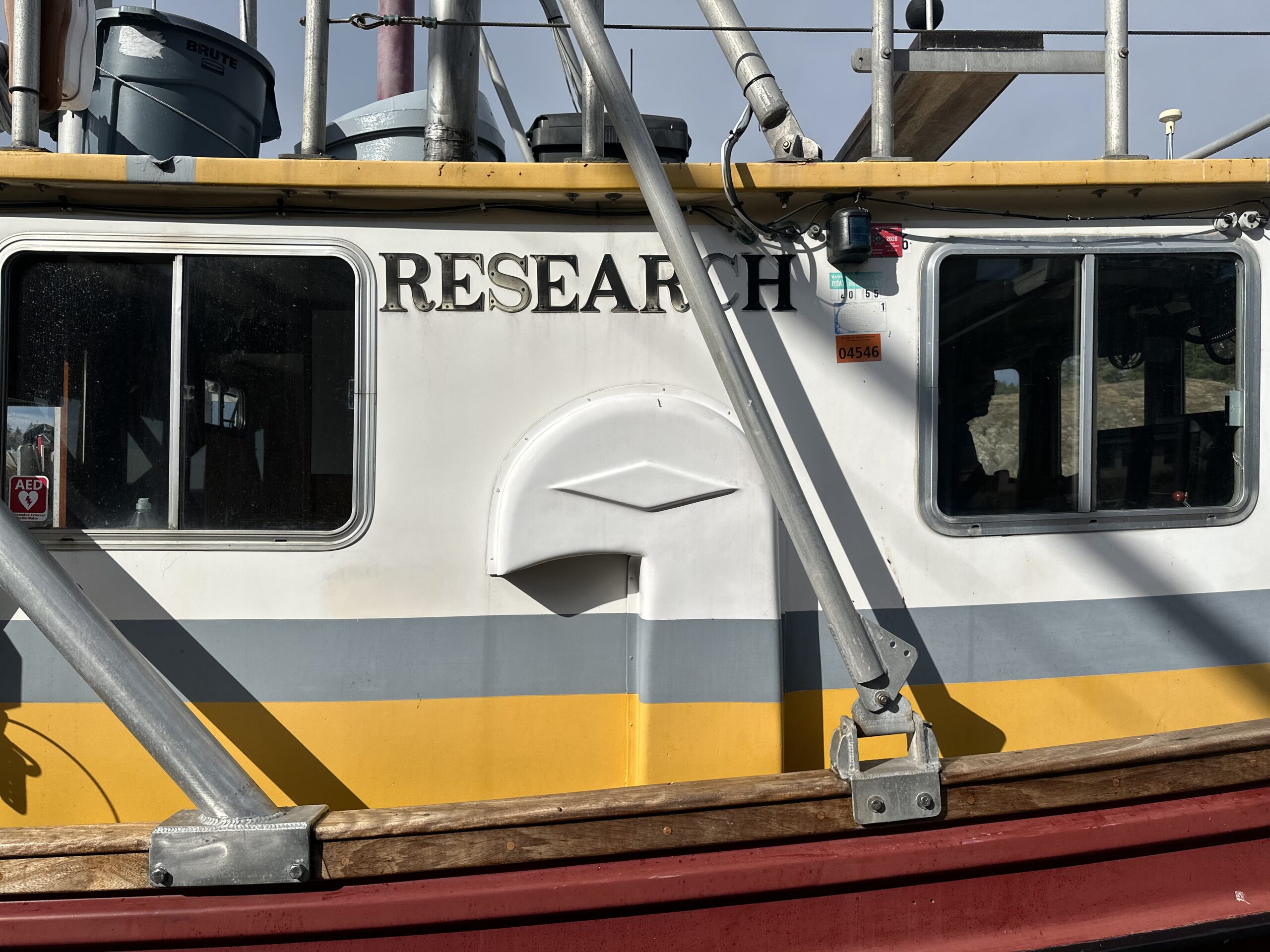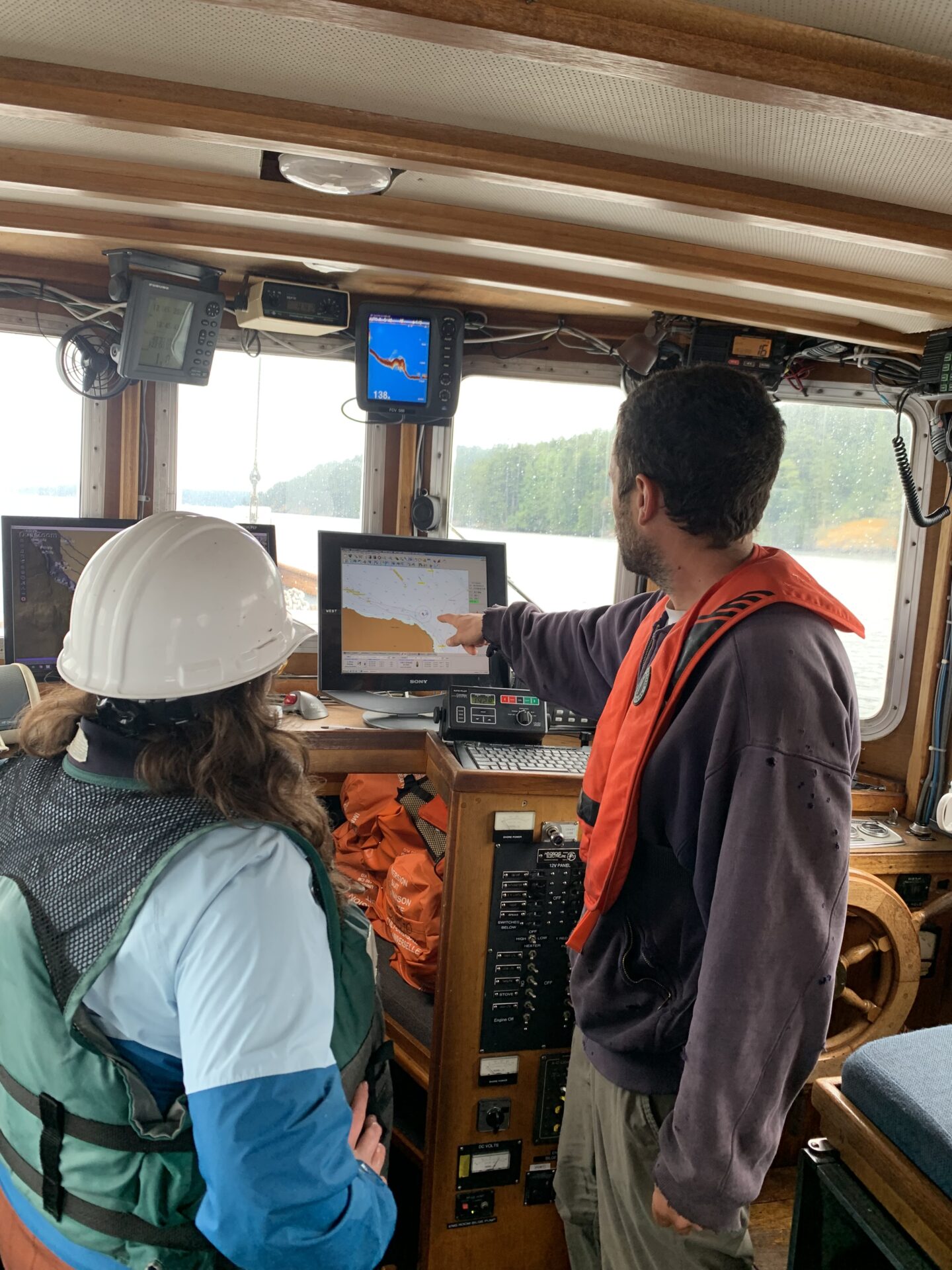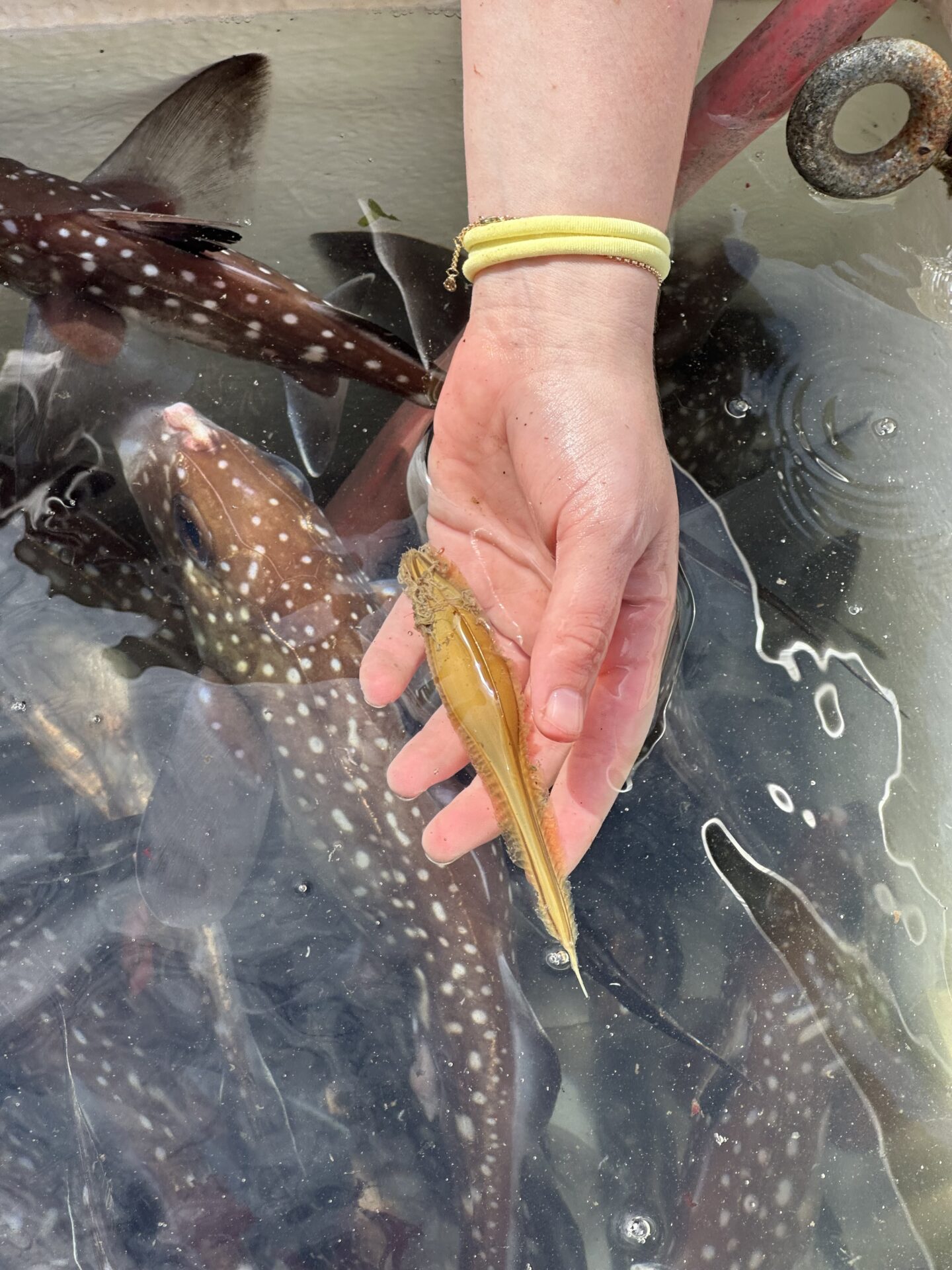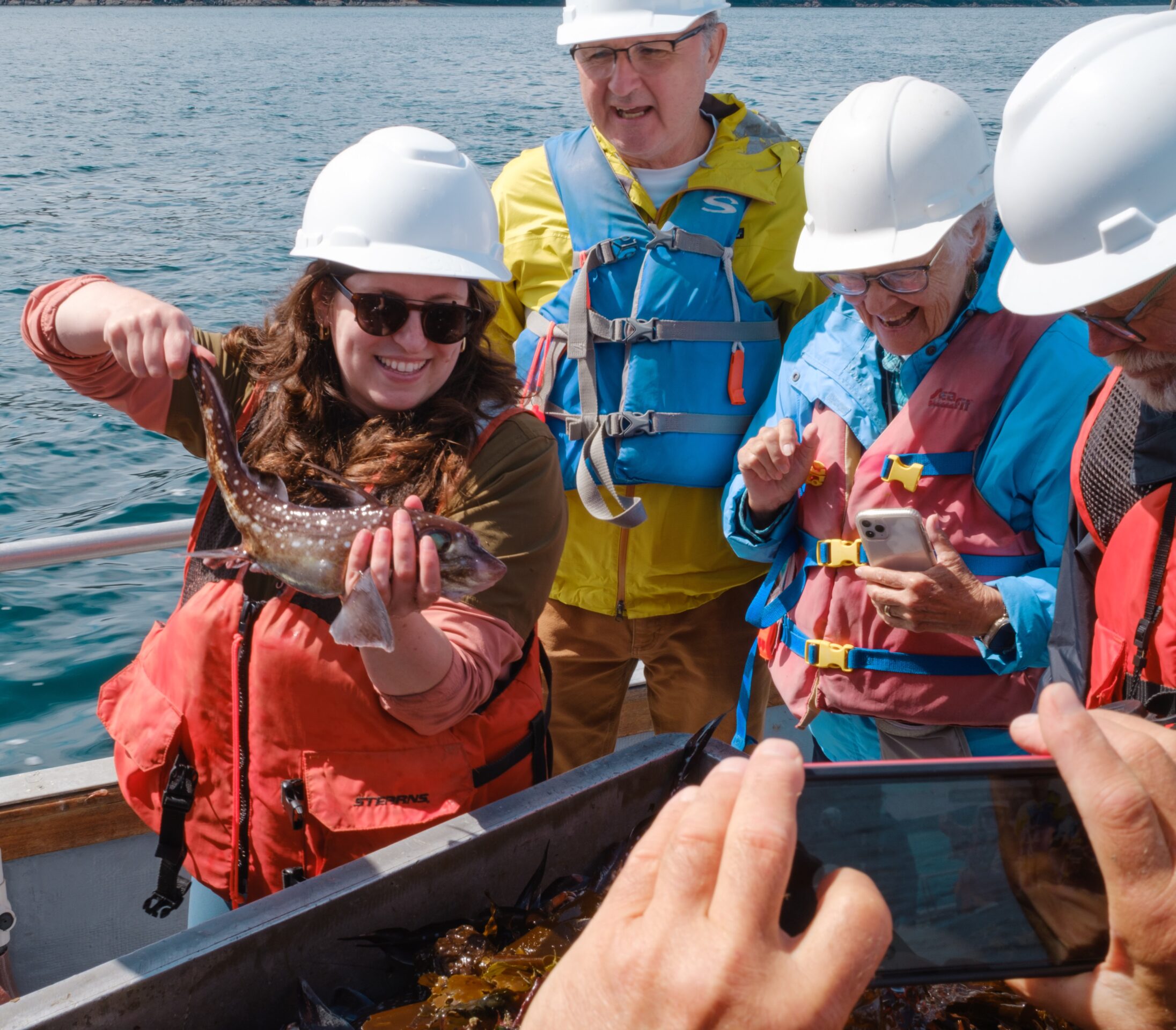Finding the First Ratfish Egg Case of the Season
This summer, we embarked on five trawling trips with one goal in mind: find the breeding and nursery sites of Pacific spotted ratfish. Over the course of these trips, we hauled in over 800 ratfish—a near 50/50 split between males and females. Some of the largest females we’ve ever seen, measuring over 85 cm, were clearly gravid, while others showed signs of recent mating. Among the young, we found some of the smallest hatchlings, suggesting we were closing in on the breeding season.

Our research vessel, the Kittiwake, in the San Juan Islands, used for exploring ratfish habitats and nursery grounds. Photo © Karly Cohen
But egg cases? Not a single one.
On our final trawl of the season, we decided to switch things up. We deployed the net in the shallowest area of our transect near Point Cautio WA, hoping for one last push before wrapping up. But luck wasn’t on our side: we pulled up an empty net. Worse yet, we tore a hole in it.

Collaborating with boat captain Eric Loss to determine the next trawl location, using population data to guide our search for ratfish nursery grounds. Photo © Karly Cohen
After a quick patch, we headed to the deepest part of our transect. This time, we hit the jackpot: 17 ratfish, a mix of fully grown males and females, clearly having just mated or laid eggs. As we were sorting through the species and counting ratfish, there it was—a pristine egg case, with a tiny embryo kicking its tail inside.

The most thrilling moment of the trip—discovering a live ratfish egg case among a sea of adults.
The moment was surreal. After trawling all season, finding empty egg cases and gravid females, we finally had the real deal: a healthy, living embryo. We rushed it back to the lab, where it now sits in our sea tables, growing day by day. Through candling—shining light through its shell—we’ve been documenting the embryo’s development, gaining insight into its growth patterns.

Discussing the anatomy and morphology of an adult male ratfish with researchers and community members on the boat. This specimen highlights key features like its cephalic clasper and large pectoral fins, which are critical for mating and maneuverability. Photo © Karly Cohen
This egg case represents more than just data. It’s a breakthrough in our ongoing search for ratfish breeding grounds, and it will help us collect vital information about the species’ development and evolution.
